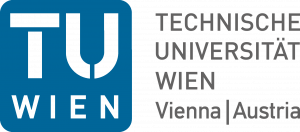Southern Hemisphere Intensive

Estimating UT1-UTC is one of the major tasks of geodetic VLBI. Within the IVS, UT1-UTC is measured daily by different observing programs:
– INT1 (MO-FR), 2 stations, 128 Mbps – INT1 (MO-FR), 2 stations, 128 Mbps
– INT2 (SA, SO), 2 stations, 256 Mbps – INT2 (SA, SO), 2 stations, 256 Mbps
– INT3 (MO), 4-5 stations, 1024 Mbps – INT3 (MO), 4-5 stations, 1024 Mbps
All these observing programs have in common that they only observe with telescopes located in the Northern Hemisphere (Wz, Kk, Is, Ny, Sh, Wn, …).
We initiated the Southern Hemisphere Intensive observing program (SI) to determine UT1-UTC using VLBI stations in the Southern Hemisphere, namely in South Africa and Australia. It is a collaboration between TU Wien, the HartRAO observatory, the University of Tasmania, and ETH Zürich. The sessions are observed with three stations: HART15M (South Africa), HOBART12 (Tasmania), and YARRA12M (Western Australia). The observations are recorded with a high data rate of 1 Gbps to compensate for the reduced sensitivity of the smaller antennas. We slightly adjusted the standard S-band frequencies to avoid local RFI. It is now continuously observed between 2200.99 and 2280.99 MHz. The sessions started in 2020 during the IVS-AUA sessions (aligned with the start time of the IVS intensive sessions for comparison reasons) or before the IVS-R1 sessions. In 2021 we observed the SI on Fridays at 18:45 UTC, parallel to INT1.
There are two key research questions:
– do we see a difference between SI and INT1, INT2, or INT3?
– one station, HOBART12, observes using a new VGOS feed. Do we see a difference between UT1-UTC derived from the baseline Ht-Hb and Ht-Yg?
You can find the answers to the research questions and more in the research article published in Earth, Planets, and Space in July 2022 (see news post: “Paper on Southern Intensives for UT1 determination published”)



